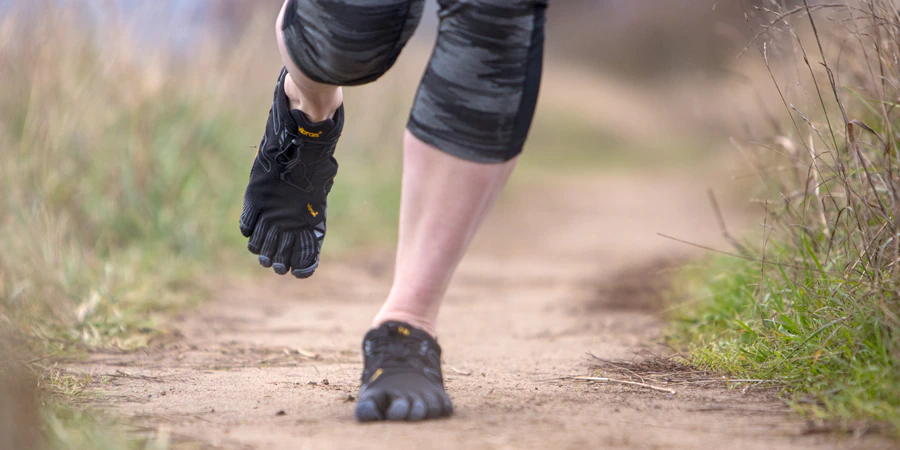Typically, when one is in the market for shoes, they are looking for comfort, style, and budget to be in balance. However, when you enter the realm of minimalist shoes, you have to choose between price or convenience.
Indeed, entry-level minimalist shoes are not luxurious or high fashion, but they are worth something. The market for minimalist shoes also offers many choices, so it’s only logical that these shoes would be priced differently.
What is a minimalist shoe?
Minimalist shoes are designed to be light and comfortable. They have a flat design that is more natural on the foot and allows the feet to carry their weight, preventing injury. The soles are thin and flexible to promote a similar feeling when walking barefoot.
The shoes also have a footbed that is made of natural materials such as cork or latex. Such shoes are sold as sandals and boots and can be made of rubber, leather, and fabric.
Why Are Minimalist Shoes So Expensive?
Minimalist shoes are expensive for one main reason, durability. When you buy a pair of minimalist shoes or sandals, you’re buying a solid, high-quality product that will last for years. Paying a little more now means not having to buy another pair for a long time. Plus, if you live an active lifestyle, they will last much longer than traditional shoes because there is less material to wear down. The less material you have, the less likely you are to have things break or wear out.
There are many benefits to minimalist shoes:
- They are perfect for longer distances, such as marathons.
- They are great for recovery because the shoes do not stress your muscles.
- They allow you to run faster because you are more in tune with your body.
You can move more quickly without the typical restrictions of shoes. Minimalist shoes can be very helpful with back pain because they give you a better posture. So, if you are interested in running more effectively, choosing minimalist shoes is the way to go.
Characteristics of most minimalist shoes:
- The shoe sole is very thin and flexible, and the heel and the sole connect with a piece of rubber that provides stability.
- Low heel to toe drop. This means that the shoes have a relatively flat sole, meaning that they are close to being flat. A shoe with a heel-to-toe-heel-to-toe drop of 10 mm or less will be considered minimalist. It is believed that this height difference can make a significant difference to foot posture.
- Minimal cushioning. Cushioning will vary between manufacturers, but most minimalist shoes have very little cushioning. Barefoot runners often say that a lack of cushioning helps them run more naturally and with better form, as they’re forced to rely on their forefoot striking.
- Lightweight. Typically 1/3 of a pound (about 1/4 kg). Light tread for better ground feel and traction, especially on trails or uneven surfaces.
- No arch support, though a few claims to have a little.
- Plenty of toe room because many toes spread out more naturally in bare feet than in shoes.
What Minimalist Footwear Costs
These shoes are so expensive because they are made of high-quality materials and are designed to be more durable. For example, a pair of minimalist running shoes can cost $100 or more, while a pair of regular running shoes cost $30 or less. Not everyone is willing to pay for high-quality footwear. Fortunately, you can find some minimalist shoes that are relatively cheap. For example, some brands sell minimalist shoes for around $20 – $40.
Minimalist shoes are so expensive because they are designed to be more comfortable than typical running shoes. Minimalist shoes allow your feet to move more freely, and they give you the best natural connection with the ground. They also last longer than ordinary shoes.
Minimalist Shoes FAQ
Below are some frequently asked questions we hope will answer your concerns about minimalist shoes.
Why does the foot need special protection? The foot, like any other part of the body, needs protection and care. Too often, we walk around on hard surfaces without taking care of our feet. This can cause some severe damage to the human anatomy.
How do you choose the perfect minimalist shoe? What’s the best way to find the pair that’s right for you? There are a few things you should look for in a minimalist shoe:
- A wide toe box (minimalist shoes should feel like wearing sandals, not being squeezed into a pair of slippers)
- Arch support.
- A low heel.
- The ability to be worn without socks.
- What if I have a high arch? If you have a high arch, a minimal shoe with a supportive insole can work well for you.
- Are Minimalist Shoes Bad for My Knees? The answer is no. Most people who run in minimalist shoes report that they have fewer knee problems than before. If you are prone to knee pain, try minimalist shoes first. Most people find their knee pain improves dramatically.
- Why are minimalist shoes better than regular running shoes? Minimalist shoes (which is a generic term for barefoot-like shoes) make you run more naturally. By having less cushioning, they force your feet to become more nimble and light on their feet; you’ll feel the ground more, which can help improve balance, provide more stability, and help you notice more about your form while running.
- Are Minimalist Shoes Bad for Your Feet? The common misconception about minimalist shoes is that they are bad for your feet. While this may have been true in the past, it’s no longer the case. Today’s minimalist shoes are made of quality materials with proper cushioning to help ensure comfort for your foot. Additionally, many manufacturers design their minimalist shoes to help promote good alignment of your feet. This will help prevent injuries while helping to relieve stress on your knees and back.

